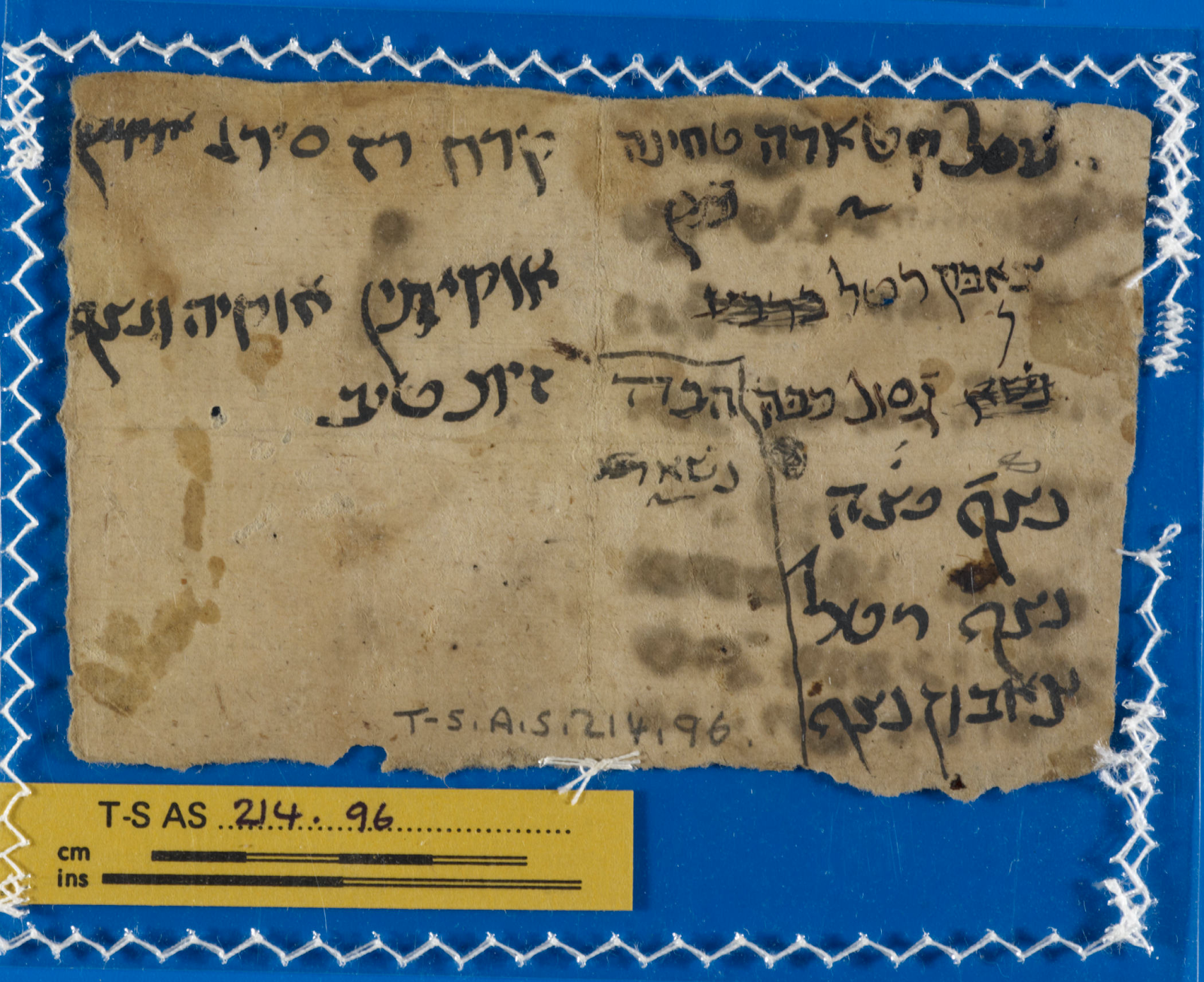Probing the “Time Capsule” of the Cairo Geniza at Adath Israel Synagogue

In mid-January, Emily Esten visited the Adath Israel synagogue in nearby Merion Station to deliver two presentations on the Cairo Geniza, one tailored to adult synagogue members and the other to children.
“The Cairo Geniza is unique among digital humanities projects,” says Esten, who is the Penn Libraries’ Judaica Digital Humanities Coordinator. “These texts are non-English and centuries older than most digital humanities materials, and the partners involved span an unusually wide geographic range.”
For those unfamiliar with the tradition of genizot: Judaism forbids casual disposal of materials containing written mention of God, which must instead be buried. A geniza (or genizah) is the location in a Jewish cemetery or synagogue where such materials are stored prior to interment. Typically, attics or basements serve as genizot, which comes from the Hebrew root GNZ, “to hide.”
The Cairo Geniza was the attic of the Ben Ezra Synagogue in Fustat (Old Cairo), and its over 300,000 fragments (totaling nearly 400,000 manuscript pages) represent a remarkable miscellany of written material, not all sacred in nature. The Jewish population of medieval Fustat spoke Arabic but wrote in Hebrew, so the materials in the Cairo Geniza — which date from 870 CE to the nineteenth century — might have been considered sacred and therefore fit for interment simply because they contained Hebrew characters.
The Penn Libraries hosts a collection of more than 600 geniza fragments and also leads a consortium of institutions in a collaborative effort to sort and transcribe the now-digitized Cairo Geniza. The project, Scribes of the Cairo Geniza, is hosted by Zooniverse, a platform for crowdsourced digital humanities projects. This means that the sorting and transcribing is done largely by volunteers.
Esten elucidated both the project and Penn’s role in it to the 30 or so adult synagogue members who gathered at Adath Israel to learn more about the Cairo Geniza. “Most of them already knew what a geniza was, so they were asking questions about this specific Geniza — its chronological scope, why it was preserved, and the happy accident of it just happening to be there,” says Esten.
The group discussed the orientalism and British imperialism tied up in the history of the Cairo Geniza, the moral implications of the removal and dispersal of the fragments, and how their eventual digitization has rendered them accessible.
For the 50 children in attendance, Esten emphasized the historical and cultural importance of the Cairo Geniza’s contents by describing it as a time capsule. Esten asked the children what sort of materials, both commonplace and special, they might put inside a time capsule to give future generations a sense of their lives and what sorts of things might be learned from the time capsule that is the Cairo Geniza.
“Why might you include a grocery list?” Esten asked her young audience. Indeed, one of the Cairo Geniza’s fragments is a list of ingredients — likely for a medicinal recipe — that itemizes tahini, saffron, olive, and pepper.
The children were especially intrigued by the occult materials that had been included in the Cairo Geniza. “They were so excited about what the spells and amulets might have been used for!” laughs Esten. Most of the young attendees — aged eight to thirteen — could read Hebrew and were able to recognize words on the materials that Esten shared. “And that was exciting for me,” says Esten. “It’s the first time I’ve experienced that with kids.”
The goal of Esten’s presentations was not only to educate Penn’s local community about the project and to enlist additional Zooniverse volunteers, but to connect individuals with their cultural history. “The questions that frame my approach are, ‘How do you learn about your history, your culture, though participating in this project?’ and ‘How do you gain from the things that are contained in this repository?’ “
“This is a way of giving the Cairo Geniza back,” Esten says, “both by letting people know it’s there to be accessed and by facilitating the conversation.”
Date
February 11, 2020
